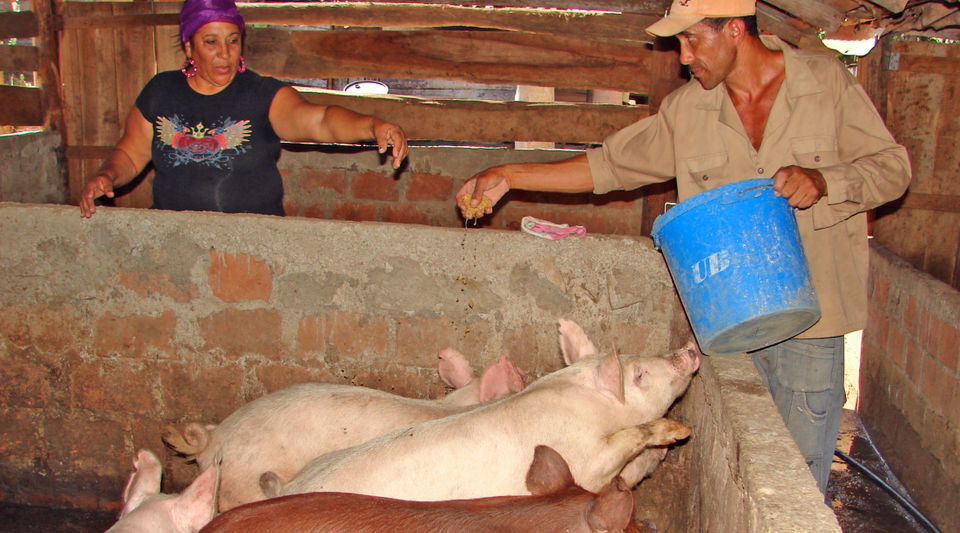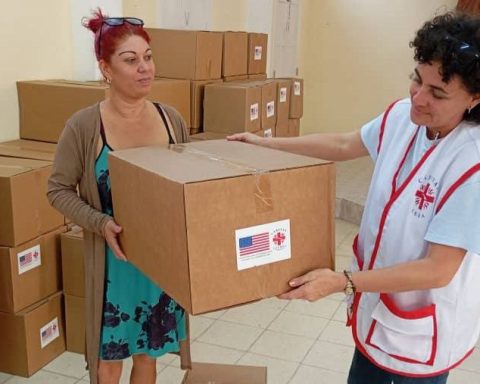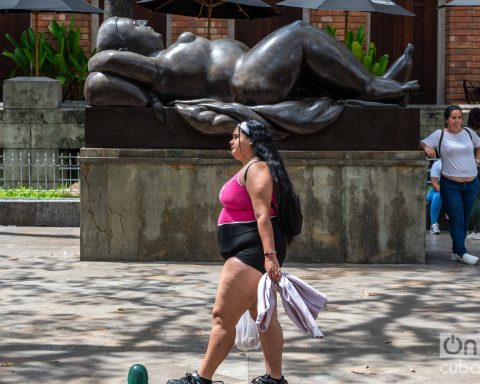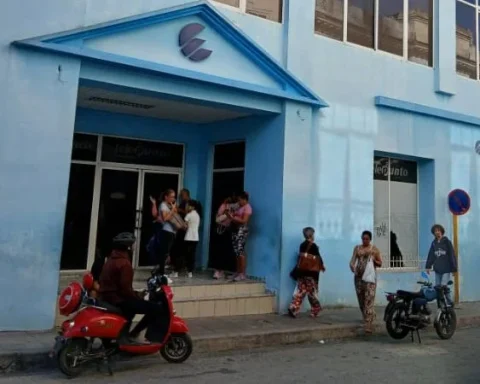The main national meat product, pork, will be conspicuous by its absence from the tables this end of the year. The difficulties in getting hold of a piece of the animal are reflected in the markets and it is not a matter of perception.
According to official data, 168,400 tons of pork were produced in 2020, far from the 2017 record, with 262,200, but a lot compared to the current amount. At the end of September of this year, it was barely reached 65.5% of the total production of the same period of the previous year and 56.5% of the state deliveries.
In addition, the economist Pedro Monreal has detected that the biggest problem is the state sector, which in the first nine months of the year produced only 56.5% of the deliveries of the equivalent period of 2020. Of the total produced in 2021, 62.4% of the product is state-owned and 36.6% private. “The main factor in the crisis in the supply of pork in Cuba in 2021 is the productive crisis of the state sector”, He says the Cuban analyst.
Eight months have passed since the famous 63 measures to improve agricultural production were approved and, although producers and experts warned that they were insufficient, the ruling party still does not explain why they are not working.
Eight months have passed since the famous 63 measures to improve agricultural production were approved and, although producers and experts warned that they were insufficient, the ruling party still does not explain why they are not working. This Tuesday, the newspaper Cubadebate publishes an extensive report titled Any little piece of … pork can be bought! in which he approaches three provinces in search of reasons.
The fall, as Monreal observed in early December, is linked to the decline in industrial feed production, which began to fall in 2018 at a rate similar to that of pork production. That is why the alternatives have begun to multiply, from the I think liquid in Holguín to moringa and mulberry, which is used in the Experimental Station of Pastures and Forages Indio Hatuey, in Matanzas, according to the report by Cubadebate.
“Anything that generates food is valid to, at least, satisfy the demand to a greater extent, because we know that the people really need it,” says one of the ranchers. In this province, where pork is being sold for more than 200 pesos per pound, 27% of the planned plan for the year has been delivered until the end of November, which was 5,701 tons, says Eduardo Miguel Jiménez Alfonso, director of production. and commercialization of the Matanzas Porcine Company.
The official explains that the State gave him the feeding of the animals to make them fat, but today the mission is impossible. “It is what each of these animals needs, due to their physiological characteristics, for an average gain of 750 grams per day as part of intensive breeding. That conversion rate today is low, it does not exceed 280 grams per day, because the protein level is negligible. “
The text also addresses the situation in Villa Clara, the leader in pork production in Cuba in the past with some 23,000 tons per year, which by 2021 only plans to reach 5,600 tons
The text also addresses the situation in Villa Clara, the leader in pork production in Cuba in the past with some 23,000 tons per year, which for this 2021 only plans to reach 5,600 tons, a quarter of what was expected. The director of the company in this province, Alexei Martín Pérez, confirms the Monreal data. “The problems with supplies come from the second half of 2018, but in the last months of this year they have reached drastic forms.”
Some data that it gives reveal the magnitude of the matter. Of the 6,700 breeders needed to replace the animals and increase the deliveries of meat that it had before, it has gone to between 2,600 and 2,700. Of the up to 12,000 pre-fattening that four years ago went monthly to state feedlots and private producers, the figure dropped to just over 2,000. And of the 520 producers associated with the state company, 220 have gone to other tasks.
In addition to the problem of feed, in Villa Clara another comes to light: ownership of the land. Two producers complain to the official newspaper about the slowness of the State in handing over idle land, which can take months of paperwork without answers despite being among the 63 measures to increase production.
The director of the Villa Clara Porcine Company adds that of the 4,700 hectares necessary to sustain an efficient pig fattening program, individual producers only have 1,421, and the state entity only 920, while the remaining 2,359 hectares are in the process of being request.
“Right now we are talking and that is full of marabou. Meanwhile, the animals still do not eat everything they need,” says one of the ranchers. And that is one more drawback. “If the land they give us has marabou, we don’t have our own clearing equipment. So we have to hire a third party, see who provides the service and when they can do it,” says Alexei Martín Pérez.
“Right now we are talking and that is full of marabou. Meanwhile, the animals still do not eat everything they need”
By last, Cubadebate He goes to Holguín, where a simple passer-by attests to the situation “My children will not eat pork, because I depend on a salary of 2,400 pesos and a good part of it goes in the basic basket and the other is not enough for buy this meat. “
Yosbel Sarmiento Peña, director of the Holguín Porcine Company, says that they have tried to focus on the delivery of land to ensure the food base, but the efforts are insufficient. The company manages 1,191 hectares and has delivered 1,127, but 620 are “infested with marabou.”
With the complications of feeding them and the liquid feed factory in the process of being reversed, the company cooks salcochos and collection food to fatten pigs that end up going to tourism due to their low weight. As he reveals, the animal must weigh 80-85 kilos, but as it only reaches 30 or 40, they serve “to meet the demand of tourism, which is 400 pigs per month.”
Meanwhile, the street continues without pork. Or no money for what little is left. “The price is set by the producer himself due to the shortage, and by the end of the year the price forecasts are to increase, at least to 500 pesos per pound of roast meat … And who can like that? A worker can invest On three pounds of meat, at that price? You can’t! “
________________________
Collaborate with our work:
The team of 14ymedio He is committed to doing serious journalism that reflects the reality of deep Cuba. Thank you for joining us on this long road. We invite you to continue supporting us, but this time becoming a member of our journal. Together we can continue transforming journalism in Cuba.

















